The Weekly Anthropocene, June 11 2024
Sydney cockatoos, Inga III, Kyrgyzstan's wildlife corridor, Pakistan's amazing cleantech surge, German geothermal, Guinea-Bissau mangroves, U.S. deepwater corals, an amazing new fuel cell, and more!
Australia
Hundreds of birds among the highly intelligent urban-living sulphur-crested cockatoo (Cacatua galerita) population in Sydney, Australia have now learned to operate public drinking fountains to obtain water. The species was already known for its widespread behavior of opening trash cans to obtain food in Sydney suburbs. Another fascinating example of rapid adaptation to living in human landscapes!
A partnership between Chinese, European, and Australian companies has developed a first-ever “microgrid in a box” ready-to-install system that integrates solar, storage, and EV charging. It’ll be available in Chinese, EU1, and Australian markets in 2026!
Democratic Republic of Congo
The World Bank has committed $1 billion towards revitalizing the long-planned but never-built Inga III hydropower project, which could build the world’s largest dam2 on the Congo River in the Democratic Republic of Congo. If it’s built this time, it could provide as much 11 GW (11,000 MW) of electricity - more than three times the current total capacity of the entire DRC, a country of over 110 million people. Here’s hoping it happens this time — it would be a human development and climate resilience game-changer, massively improving life for millions of the world’s poorest!
Kyrgyzstan
Kyrgyzstan has created a new 800,000-hectare wildlife corridor linking Naryn Nature Reserve to Khan-Tengri National Park. This protects key habitat for the growing local snow leopard population and its prey species, Asiatic ibex and argali sheep. Awesome!
Pakistan
In the Gilgit-Baltistan region, the WWF and a Lahore university are testing out solar-powered AI-enabled cameras that detect and identify the presence of a snow leopard, then automatically send text alerts to nearby villages warning them to move their livestock to safety. A fascinating new technique for human-wildlife coexistence!
Pakistan shocked the energy world in 2024 with its unprecedentedly fast build-out of decentralized solar power, driven by a bottom-up wave of businesses and individuals importing cleantech from China. It appears that Pakistanis installed a total of 22 GW (22,000 MW) in less than 18 months — about one Belgium’s worth of electricity-generating capacity. And now, a new report finds that Pakistan is now seeing a surge in lithium battery imports to store all those clean electrons!
This is part of a broader electrotech shift: to take just one example, BYD is planning to open an EV factory in the city of Karachi. More electricity also tends to advance social change, in a multitude of ways. The Guardian recently profiled a recent boom in women electricians in Karachi, a bold move in patriarchal Pakistan.
It’s truly amazing is that this is all happening. A few years ago, it looked plausible (and it’s still not impossible) that Pakistan could become ground-zero for climate change-driven societal collapse. A large chunk of the entire country was devastated by extreme floods in 2022, multiple Pakistani cities suffered prolonged periods above 120°F during the 2024 South Asian heatwave, and the nation has the most mountain glaciers of anywhere in the world, many of which are at risk of disappearing and imperiling communities’ water supply. But while military rule, endemic terrorist violence, and many other problems persist, ordinary Pakistanis are pulling off an epic bottom-up, “by their bootstraps” socioeconomic transformation to deploy life-enhancing, resilience-building decentralized clean energy. WOW!
Germany

A new study discovered that the Weesow-Willmersdorf solar farm, one of the largest in Germany, has become a high-density breeding area for the Eurasian skylark (Alauda arvensis), a songbird, and is one of the leading breeding sites for the species in all of Germany. Surveys counted 21 to 47 breeding pairs per 10 hectares, compared to 7.6 per 10 hectares in a reference farmer’s field. Farm-to-solar is often a wildlife win!
This solar farm had already adopted solar grazing, and the presence of sheep and their droppings, plus the diverse meadow vegetation and absence of pesticide or fertilizer application, attracts many insects for the larks to eat. More and more bird species are arriving as they discover this “safe haven” over the years. Great news!
Another study from Germany found that floating solar can help increase the climate resilience of lakes, providing shade and lowering water temperatures to minimize evaporation loss during increasingly hot summers. Amazing synergies here!
As Germany reindustrializes and rearms to deter Russian aggression, a new experiment in Bavaria by Canadian startup Eavor has achieved a new breakthrough in the fast-growing field of advanced geothermal clean energy drilling. They used real-time magnetic ranging (brand-new tech that cuts costs substantially) to drill a borehole for their closed-loop system, which sends water 4.5 kilometers underground, far enough to it to heat up amid 160°C rock layers and then rise back up to turn a turbine and produce electricity (and/or power district heating via a no-contact heat exchanger). Amazing potential for scalable clean baseload power!
China
The world’s first-ever grid-scale battery storage project to feature cutting-edge sodium-ion batteries3 (whose key element, sodium, is much cheaper and more abundant than industry-standard lithium) has come online in China. The Baochi Energy Storage Station, located in Yunnan, stores power from over 30 wind and solar projects in the region. It was built in seven months and is set to be the first of many.
In Q1 2025, China installed a new record high of 60 GW (60,000 MW) of solar power, including 36 GW of rooftop solar. Words are beginning to fail me here, in a good way.
Sweden
Startup Millow is converting4 a former LEGO factory in Gothenburg, Sweden into a vegan protein factory, mass-producing their oat and mycelium-based vegan beef with 97% lower emissions than dead-cow beef. Amazing work - hope this spreads!
Guinea-Bissau
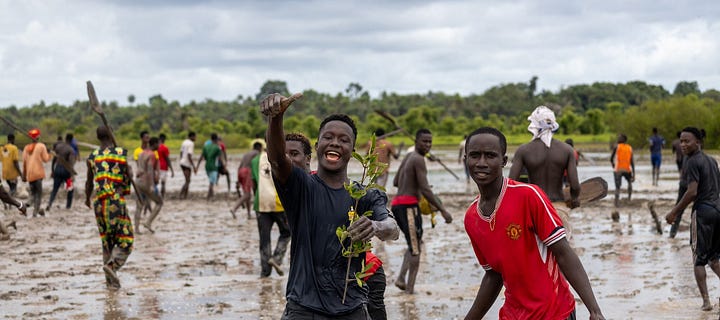
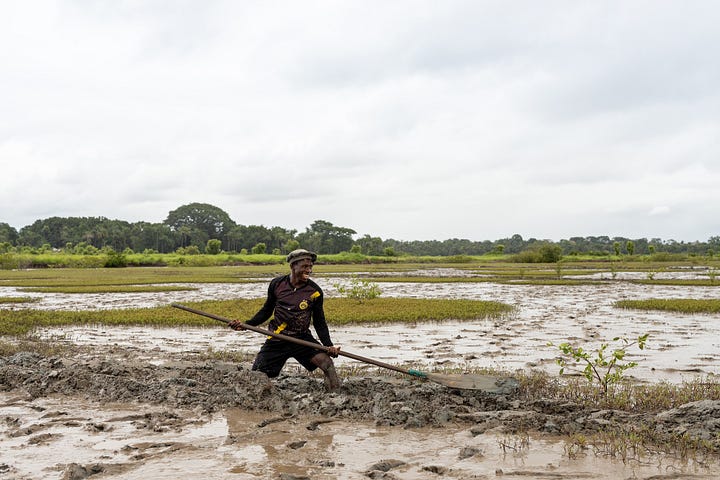
Species-rich and fishery-nurturing mangrove forests cover 9% of the area of the Portuguese-speaking West African nation Guinea-Bissau, the highest proportion of any country in the world. Now, after years of habitat loss to farms, a nationwide grassroots mangrove restoration effort is emerging, with local communities digging ditches to restore natural water flow and enable mangrove regrowth. A coordinating national platform, PLANTA, began in 2020. So far, 2,600 hectares of mangrove forest were restored in Guinea-Bissau between 2015 and 2024! Great work.
Qatar
The International Islamic Fiqh Academy conference in Doha, Qatar, (IIFA, a global network, is one of Islamic law’s highest authorities) has ruled that cell-cultivated meat and genetically modified foods are permissible to eat (halal) under Islamic law.
Chile
The largest elephant seal colony in Chile is now recovering from its losses to the deadly H5N1 bird flu panzootic, with researchers finding in April 2025 that the population had doubled to 200 individuals including 33 pups. Great news!
South Korea
On June 3, 2024, liberal candidate Lee Jae–myung was elected as the new President of South Korea, a highly advanced technological economy beset by severe demographic decline and a recent constitutional crisis. President-elect Lee’s notable biographical highlights include being injured in a factory as a 13-year-old impoverished child laborer, overcoming this background to become a human rights lawyer then mayor, governor, and national legislator, surviving a stabbing in January 2024, then joining (and livestreaming) a group of lawmakers in evading police and climbing over the fences into the National Assembly in December 2024, where they voted to end the recent declaration of martial law and successfully short-circuited the then-president’s attempted coup d’etat. He’s also great on clean energy policy, planning to support solar build-out to help farms while expanding nationwide the UBI-like “sunshine and wind pension” model in which a share of solar development profits are redistributed to local residents, and has already announced a new climate and energy department! This writer is intrigued to see where South Korea goes next.
United States
As the Senate mulls a horrifically self-destructive budget backed by an authoritarian monster president, people across America are still fighting to build a brighter future!
A pioneering NOAA project is restoring life-rich deepwater corals in the Gulf of Mexico5 seabed areas damaged by the gigantic 2010 Deepwater Horizon oil spill. U.S. Navy divers are using cutting-edge deep-water techniques including diving bells and breathing a helium-infused mixture to avoid the bends to collect samples of surviving coral. Those corals can then reproduce in labs across Texas, South Carolina, and Louisiana that have now spawned over 1,000 baby corals in captivity with plans for future restoration. An epic new frontier for humans as custodians of the biosphere!
A landmark new study has found that a solar farm in Colorado appears to have directly helped the grassland ecosystem beneath the panel survive a drought! The solar panels provide shading and accumulate additional water, increasing vital soil moisture beneath. They calculate solar panels may increase plant growth by about 20% or more compared to open fields with no solar panels, especially in dry years.
More and more, we’re learning that the renewables revolution isn’t just clean energy and emissions reduction for humans - it’s climate resilience for agriculture and wildlife! AWESOME.
“The most important takeaway here is that even though this solar array was designed to maximize energy generation – not to promote beneficial environmental conditions for the grasses grown beneath – it still provided a more favorable environment during a dry year.”
— Dr. Matthew Sturchio, coauthor.
Popular band Coldplay recently held a concert at Stanford Stadium powered by an easily transportable, ultra-light, paper-thin, and 100% recyclable printed solar setup!
For years, there’s been no really promising near-term prospect of seriously decarbonizing air travel. The current generation of fast-improving batteries aren’t (yet!) energy-dense enough, so any battery big enough to power a standard jet would likely be too heavy for the jet to carry. That may have just changed with one truly extraordinary innovation: a new lab-scale sodium-based fuel cell invented by MIT engineers. It reacts liquid sodium with oxygen to produce electricity, solving the weight problem by collecting much of its fuel from the air in-flight. Furthermore, its emissions — sodium oxide — rapidly react with atmospheric carbon dioxide to form sodium bicarbonate, commonly known as baking soda, which when falling into the ocean will even help counteract ocean acidification. Plane travel could eventually become a scalable greenhouse gas reduction project! If this can scale up and commercialize, it could become a very big deal very fast. MIT is already helping new startup Propel Aero to further develop the fuel cell with drones. AMAZING work!
Potentially a notable early consumer-focused win for the EU’s “work with and learn from China” cleantech development strategy that I discussed in my recent article!
Many people in wealthy countries oppose dams for good reason due to their negative effects on rivers (I was amazed at the wildness of the dam-free Vjosa River!) but in the DRC where tens of millions of people are living in abject poverty, the ethical imperative is totally clear.
Which are also starting to be used to power Chinese mopeds.
Hat tip to
and his always-excellent newsletter for alerting me to this story!



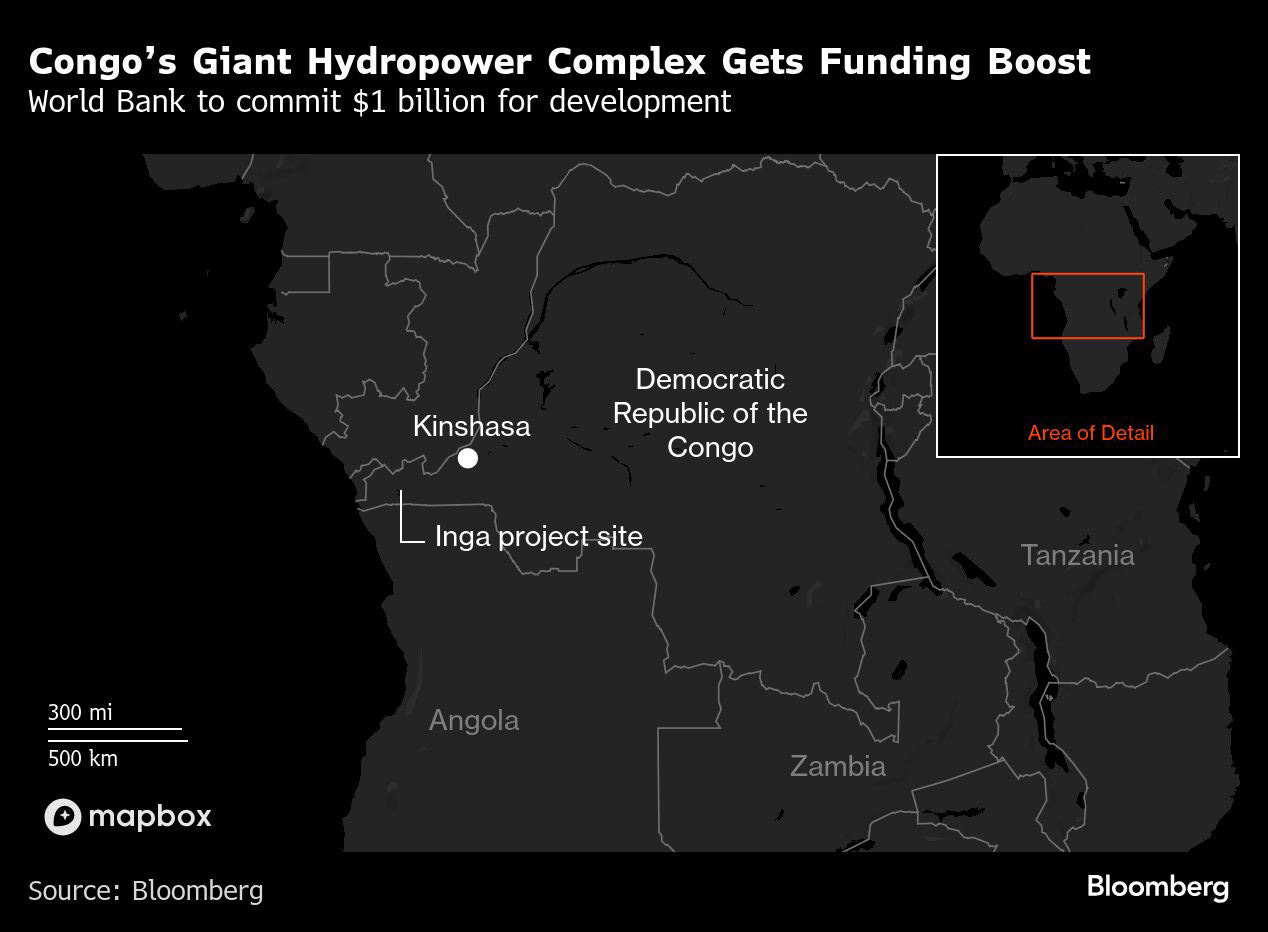
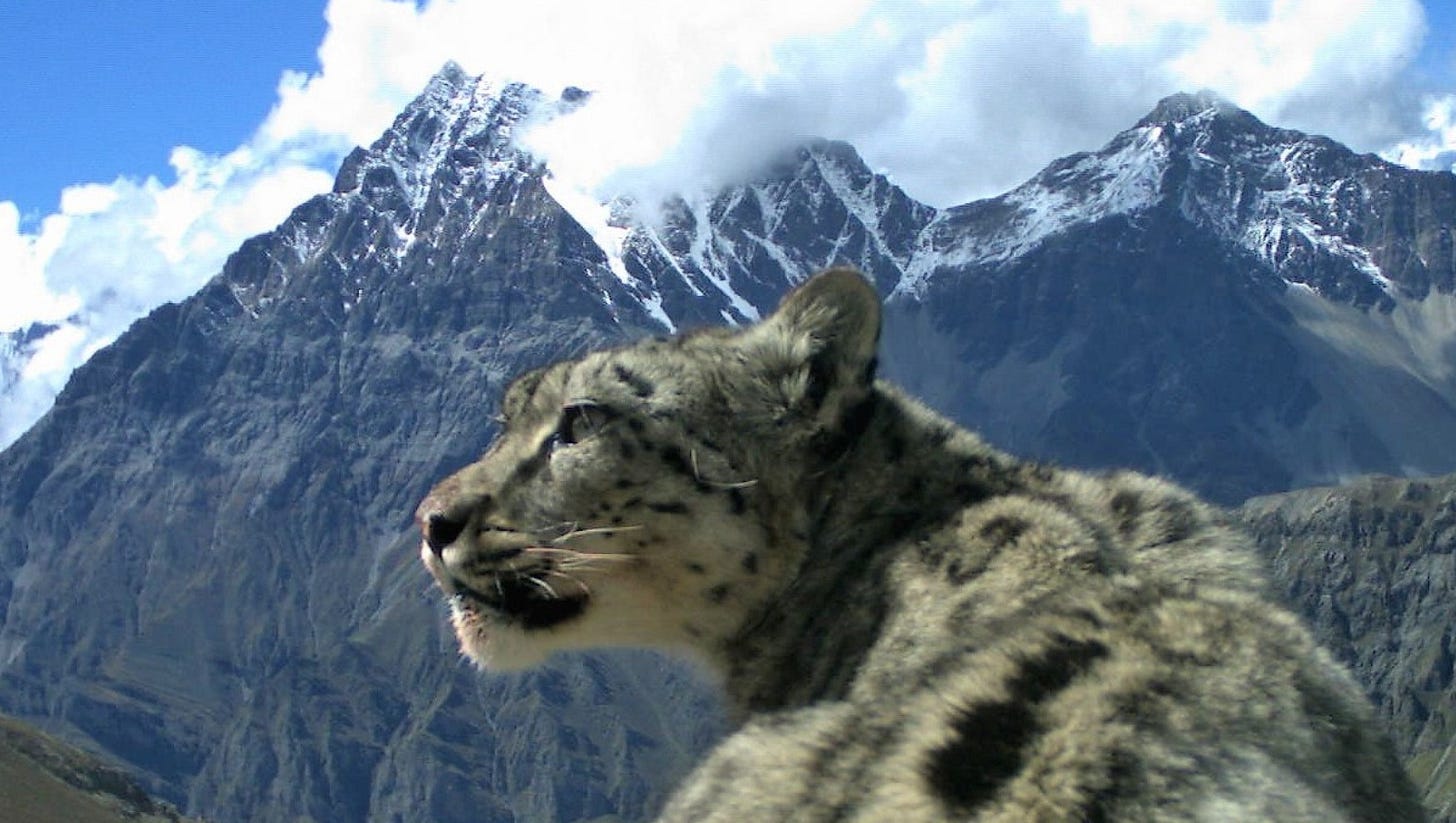


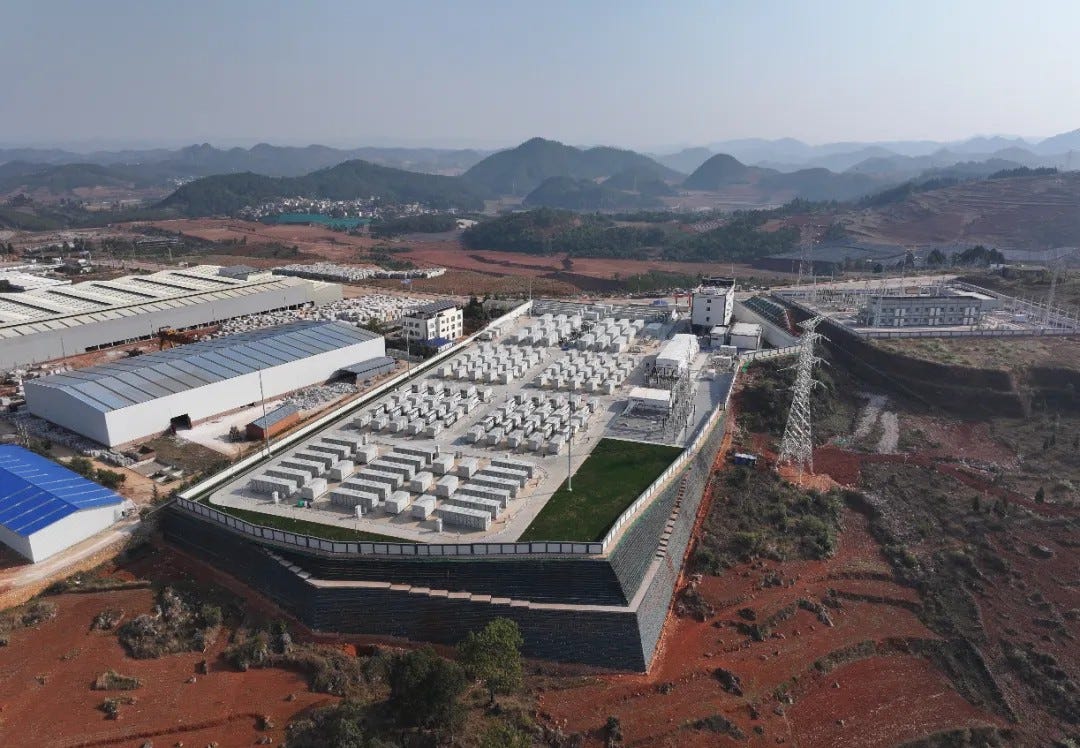


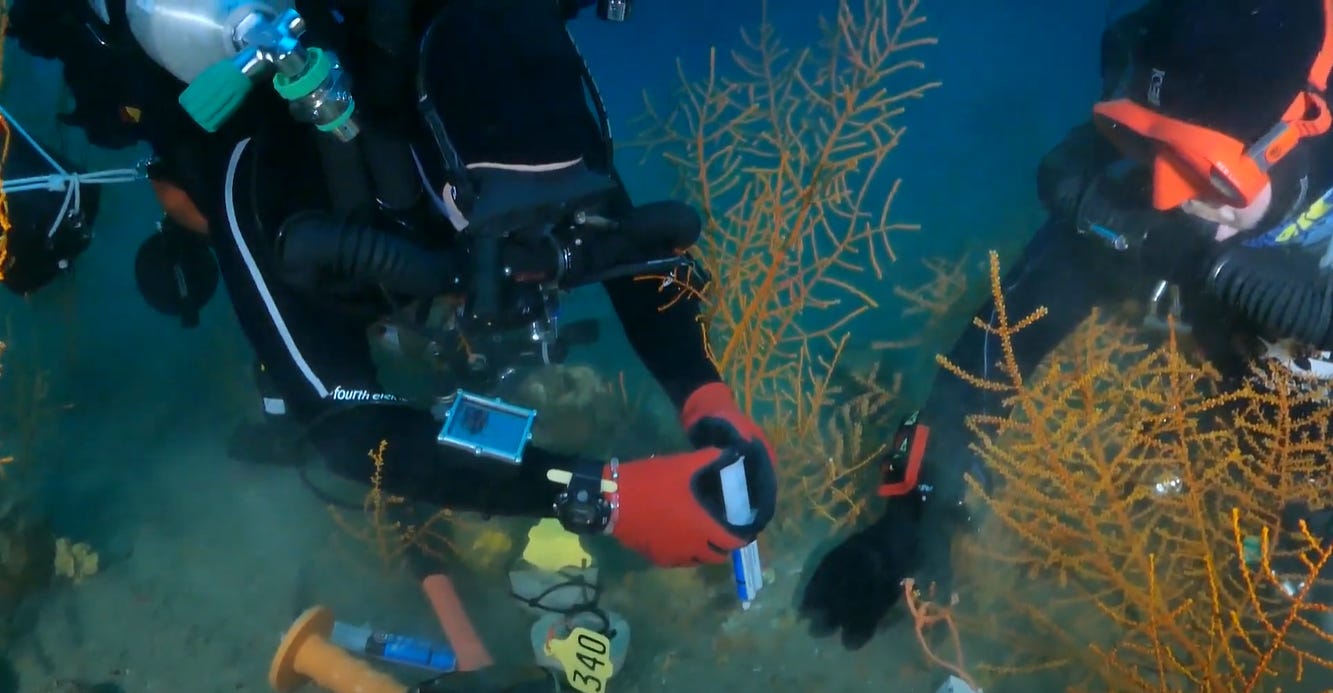

I am one of the authors of the sodium-air fuel cell paper. It's very cool to see a newsletter that I have read religiously for the past year covering my work!
It's still very early days with the sodium-air cell, with a lot more to study and learn in terms of further optimizing its performance and understanding safety considerations, but we are working hard to solve these issues!
Another great read. Thanks for the mention!